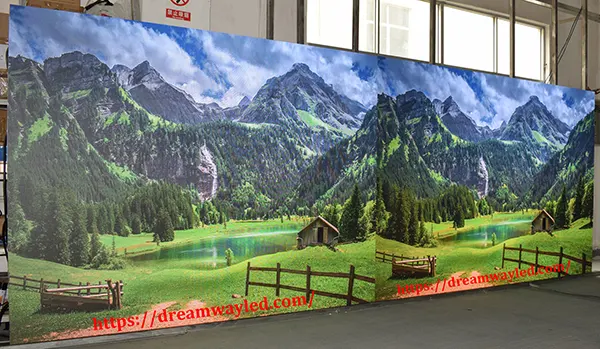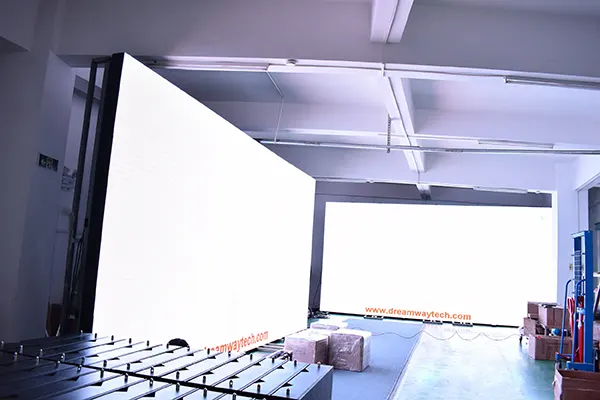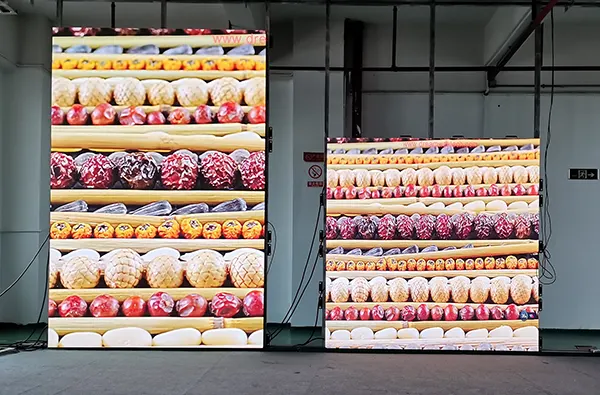| Indoor LED Display Screens | Outdoor LED Display Screens |
You will see such screens at:
|
You will see such screens at:
|
| On average, these screens range from one square meter to more than ten in size. | On average, these screens range from tens of square meters and hundreds of square meters. |
| Less brightness, Higher pixel density, Lower pixel pitch | Greater brightness, Lower pixel density, Higher pixel pitch |
| Used for viewing from closer distances. | Used for viewing from greater distances. |
| Greater resolution power | Lower resolution power |
| Indoor screens have no protective gears against the weather conditions. | Outdoor screens offer resistance and durability against weather conditions. |
How do you identify indoor and outdoor LED display screens?
Indoor and outdoor LED screens have various characteristics that help us differentiate them. They differ in brightness, resolution power, manufacturing cost, and durability against weather conditions. The size of the LED screen can tell you whether you can use it outdoor or indoors. This size difference is because outdoor LED screens have more viewers than indoor screens. Outdoor LED screens have qualities and characteristics that support their range of use. At the same time, indoor LED screens have certain features that are specific to them.
Brightness:
Indoor LED screens need less brightness. It is because of their less exposure to bright daylight. So, the indoor LED display has less brightness than the outdoor type. The higher the brightness, the higher the luminosity level. LED display screens have the main advantage of clarity.
Furthermore, indoor LED displays are best for close viewing. Thus, they have higher pixel density and lower pixel pitch resolution. In contrast, outdoor screens are suitable for viewing from greater distances. Thus, they have less pixel density and more pixel pitch resolution.
Resolution:
Manufacturing cost:
- Brightness
- Resolution
- Pixel pitch
- Size of screen
- Pixel density
- Protective gears against the climatic effect
Installation:
- Wall-mounted
- Cantilever
- Inlaid
- Upright
- Standing
- Roof
- Mobile
- Arc and many other installation methods.
Due to their small size, indoor LED screens are easy to assemble. Their installation is also convenient. Thus, few styles are available for their installation. Yet outdoor LED screens are difficult to install everywhere due to their larger size. Therefore, these screens have designs based on customers’ recommendations.
Durability against weather conditions:
An addition to indoor and outdoor LED display screens:
What’s best for you?
- Installed environment
- Viewing distance from the screen
- Manufacturer’s services.
There is no hard and fast rule. I would say go for the display screen that best suits your business.






